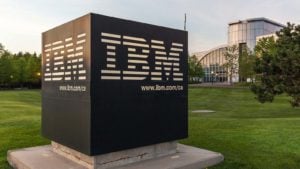Everyone loves a good dividend stock, right? Obviously we all like to see our holdings appreciate over time, but getting tossed a nice quarterly yield never hurts. More money in your pocket is always nice, whether you reinvest those returns or not.
As a result, dividends get a lot of understandable attention from investors. But just like regular stocks though, there is a wide variance in the types of dividend payers that are out there. There are the steady and dependable names, and then there are the high-volatility, higher-yield names.
I want to focus on this latter group. To be clear, I’m not looking for 15% yielders that are facing liquidity issues, now or anytime soon. I want real dividend stocks that seem to have accidentally become high-yielding names. Or at least ones that have high yields and can still generate decent returns.
Here are my seven dividend stocks for more adventurous investors:
- Exxon Mobil (NYSE:XOM)
- Chevron (NYSE:CVX)
- International Business Machines (NYSE:IBM)
- AT&T (NYSE:T)
- Ford (NYSE:F)
- Federal Realty Trust (NYSE:FRT)
- PetMed Express (NASDAQ:PETS)
The 10-year Treasury yield has jumped more than 30% from the September low to the October high. Still, it pays out just 0.77%. With that type of low income, dividend stocks are more in focus than ever before.
Dividend Stocks to Buy: Exxon Mobil (XOM)

Exxon Mobil is one of the best-known dividend stocks out there. But because of the volatility in both the energy and equity markets, the stock has suffered terribly in 2020.
On October 8, shares were down 35% from the June highs. Exxon stock is down close to 50% from its 2020 high, and more than 55% from its all-time high in 2014. That’s on a dividend-adjusted basis. On an unadjusted basis, shares are down 66% from the highs.
But enough of the performance numbers, because we get it: Exxon Mobil has suffered mightily. With the fall, its dividend yield has swelled up to 10%.
When the company reported its Q2 results in July, management held firm on the dividend. Exxon is cutting CapEx and adjusting to the new energy market paradigm.
Admittedly, buying a stock with this high of yield is somewhat concerning. But Exxon is one of the strongest energy names in the business. The sector is in major upheaval, but the world needs oil and gas. As long as that’s the case, Exxon will be in business.
Perhaps that dividend gets lowered, but with the stock at these prices, it may be worth a speculation.
Chevron (CVX)

Chevron recently dethroned Exxon for the largest market capitalization in the energy space, although the two are still quite close in size. And to be clear, it can’t be stressed enough how much this sector is struggling. But that’s often the best time to start taking a look at these names.
Before the novel coronavirus came along, we already had a supply-filled energy market. Here in the U.S., producers had (and still have) oil wells drilled and ready to go. All the companies need to do is tap the wells once oil prices are back on the ups.
Then they can increase production virtually overnight and sell their product into the market. Natural gas has been in a similar state. It certainly didn’t help that OPEC+ was constantly trying to balance supply cuts and production in order to keep oil prices at a somewhat elevated state.
Then Covid-19 happened. With supply already high, demand fell off a cliff. While it’s steadily rising now, that has left Chevron and others in a world of pain.
The stock pays out a lower 6.9% yield, although that’s still quite high by most standards. Chevron will get pinched this year on both top and bottom lines, but its balance sheet remains in decent shape. Further, I think it can find a way to maintain break-even or positive free cash flow now that there is some stability in the oil market.
International Business Machines (IBM)

The boring but steady company known as IBM has been a pit of misery for investors. Those that thought a nice dividend, big buybacks and a low valuation would be a recipe for success have been painfully punished with a heavy dose of FOMO.
Or is fear of missing out being replaced by POMO — the pain of missing out?
In any regard, IBM investors have watched the stock go nowhere for a decade, while mega-cap tech names have soared. Apple (NASDAQ:AAPL), Microsoft (NASDAQ:MSFT) and Amazon (NASDAQ:AMZN) have all achieved $1 trillion market caps, while IBM lays by the wayside.
Shares are down 5% over the past 10 years and up just 22% since we turned the calendar to 2000.
Yikes, that’s bad, but there are a few positives. First, the stock’s return over those two periods increases to 30% and 88%, respectively, when including the dividend.
That helps. It also helps that IBM still pays out a 5% dividend yield.
In July 2019 the company completed its $34 billion acquisition of RedHat, and it announced a new CEO earlier this year. In October 2020, IBM announced the spin-off of its infrastructure business to focus solely on the cloud.
Will it work? There’s no guarantee, and IBM’s execution has been spotty over the years. But there’s good reason for hope with this one, even if the move takes time.
AT&T (T)

A lot of investors are bearish on AT&T, and for good reason.
The company has no growth, with estimates calling for an 11% earnings decline this year on a 6.4% drop in revenue. Covid-19 didn’t help, but it’s more fundamental than that. Consider that estimates only call for a 1.3% and 1.9% rebound in revenue and earnings next year, respectively.
Further, the company has made multiple execution mistakes over the years. Perhaps the largest is buying DirecTV for $48.5 billion and assuming its $18.6 billion in debt. This was five years ago right at the cusp of the cord-cutting trend.
Highlighting the fact that AT&T “still just doesn’t get it,” the company’s HBO Max product isn’t on Roku (NASDAQ:ROKU) or Amazon devices. The two most popular platforms in one of the hottest digital trends and AT&T is playing the stubborn hold-out game you might expect from a dinosaur, legacy company.
To top it all off, its balance sheet carries a ton of debt. So why is it on our list?
Because AT&T stock pays out a super attractive 7.3% dividend yield. Furthermore, it has raised that dividend for more than three decades, so it’s clearly a priority from management. Plus, it generates a ton of cash flow, particularly from its TimeWarner acquisition — one deal the company actually got right.
Put it all together and AT&T’s free cash flow can easily cover the dividend expense for the time being. Management believes it can end the year with a free cash flow coverage ratio of around 60%.
Ford (F)

Automakers have been hit especially hard by the novel coronavirus. Production and supply chain management are key to keeping those thin margins up and profits coming in. Throw in a major disruption though and the companies are going to struggle.
However, there’s just one little thing keeping Ford off of investors’ lists of dividend stocks: it doesn’t pay a dividend!
In March, the company suspended its quarterly payout of 15 cents per share. In total, Ford was facing an annual $2.4 billion expense related to the dividend. As revenue was evaporating in late Q1 and early Q2, the automaker drew down its credit lines, reined in the dividend and hunkered down.
And that was precisely the right move. Now that the economy is creeping in the right direction, it will be interesting to see when and how Ford will reinstate its quarterly payout. Until then, it may remain off investors’ radar, which is fine. But waiting for the reinstatement may mean buying in too late.
The company’s push toward electric vehicles with its F-Series pickup and Mustang Mach-E should help the stock gain some street credit. Plus its Bronco has received a favorable amount of attention.
If the economy doesn’t fall to shambles, Ford stock could be a surprising winner.
Federal Realty Trust (FRT)

Who would have thought Federal Realty Trust would ever end up on an adventurous dividend stocks list? Definitely not me.
Federal Realty Trust is one of the most consistent dividend stocks out there. The company has not only paid, but raised its dividend for more than 50 consecutive years. There are not many stocks in this vaulted club.
So why exactly is FRT on this list? Investors who bought this name with a 3% yield at any point in the past decade did a good job. Anyone who bought Federal Realty with a 3.5% yield did a tremendous job.
For reference, the highest yield we’ve seen in this name over the past 10 years is 3.6%, hit in 2018 after almost hitting this mark in 2010.
Right now, investors can buy FRT with a whopping 5.3% yield given the turmoil that the REIT space suffered this year. Past results are not a guarantee of future returns, but Federal Realty looks like the safest 5.3% yield we can find. Even if investors still hate the REIT space.
PetMed Express (PETS)

Welcome the lowest yield on this list, with PetMed Express’s dividend ringing in at just 3.5%. Even at that “low yield” — at least compared to the rest of this list — the stock still yields more than four times the 10-year Treasury bond.
Further, I really like how this stock sets up. It was off my radar until our “7 Pet Stocks to Buy” story came out. When this name popped up, it was too hard to ignore.
PetMed Express not only boasts a solid dividend yield, but it comes on a nice dip. Shares are down about 25% from its summer highs, which helps bolster that yield but also lets investors in on a dip. It can be hard to chase stocks after a huge run and with a high valuation.
Thankfully, PetMed buyers don’t have to.
The stock trades at a reasonable 21 times this year’s earnings estimates. The company is forecast to grow its earnings by 18% this year and 10.5% next year, too. Finally, PetMed doesn’t carry any debt. Simply put, there are too many positives to ignore with this one.
On the date of publication, Bret Kenwell held a long position in T, ROKU, AAPL and PETS.
Bret Kenwell is the manager and author of Future Blue Chips and is on Twitter @BretKenwell.
